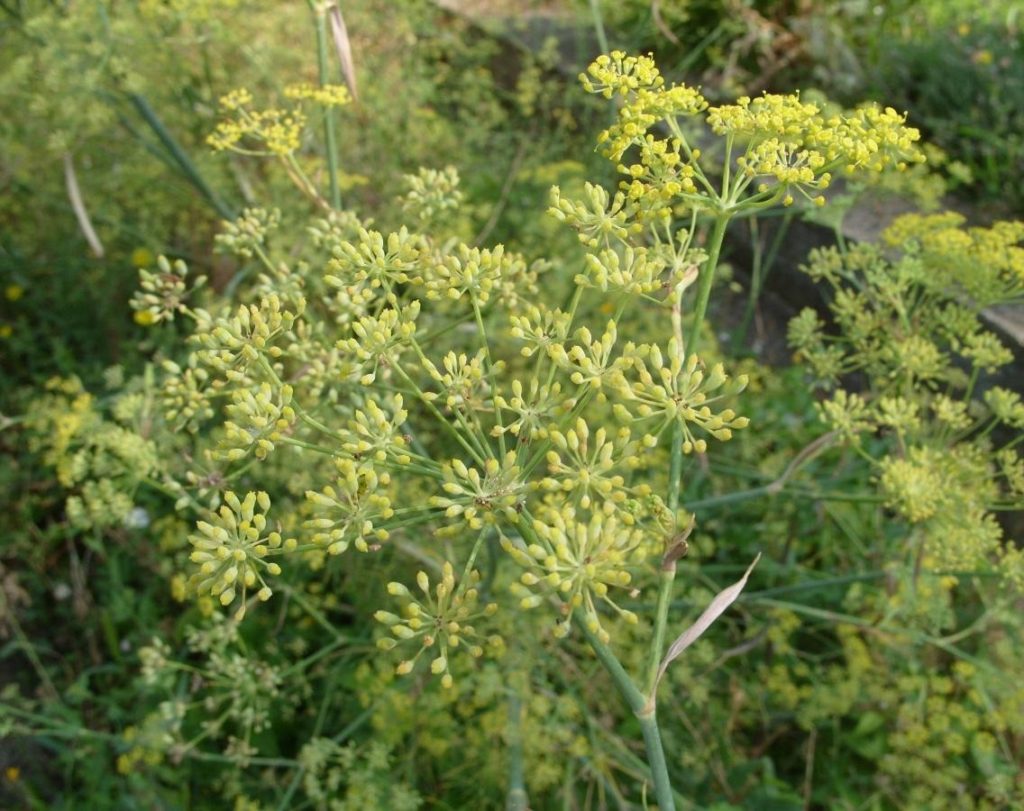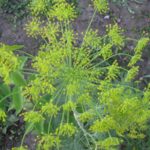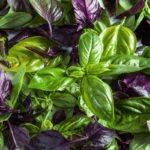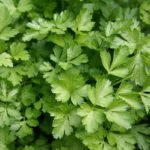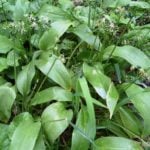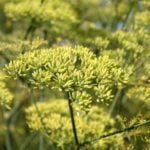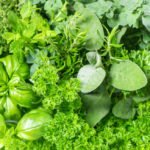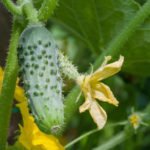Fennel has long been known to the peoples of the Mediterranean. In ancient Greece, it was believed that it was connected with the element of Fire; the Greeks believed that a person receives knowledge from the gods in the form of coal on a fennel stalk. The ancient Romans were deeply convinced that chewing fennel combats obesity. In the dark Middle Ages, there was a belief that fennel placed in keyholes could protect the house from evil, and its twig under the saddle of a horse would drive away all mosquitoes from it.

Fennel (Foeniculum vulgare) is a perennial or biennial herbaceous plant with an erect, rounded, branched stem up to 2 m (6.6 ft) high. The leaves are very tender, strongly dissected into filamentous lobes. The flowers are small, yellow in complex umbels; they bloom in July-August. The fruits ripen in September.
In varieties of vegetable or Italian fennel (var.azoricum), before the formation of the peduncle, the petioles of the basal leaves form thick swellings. There are also decorative varieties:
- Purpureum’ – its young leaves are bronze-purple, turning bluish with age;
- ”Giant Bronze’ – the leaves are copper, with age they become dark brown-bronze.

In the South, many fennel lovers use it in flower beds as an openwork plant that gives airiness to any plant composition. For young greens, it is better to place dill in the garden as a seal of green or early root crops, on a spicy bed, and plant it for edging beds. When growing on seeds, it is better to plant fennel in a flower bed, where it will perfectly cope with the role of an accompanying element, and during the flowering period it will add restrained yellow tones.
The vegetable variety of fennel is best grown on fertile, sufficiently moist, loose chernozems, sandy loam or light loamy soils with a distance between plants of 15-20 cm (5.9-7.9 in), between rows – 45 cm (1.5 ft); the depth of seed embedding is 1.5-2 cm (0.6-0.8 in).
Young fennel leaves with an aniseed aroma and a slightly sweet, refreshing taste are used for food (this is a good seasoning for dishes, spice when canned), fresh and boiled petioles, boiled roots, inflorescences (when canned).
Fennel is also grown as a medicinal plant. For medicinal purposes, fruits with antispasmodic, secretolytic, carminative, expectorant, mild diuretic (removes excess fluid from tissues), laxative and other effects are used.

A tart-smelling oil is obtained from fennel fruits. Just a few drops of it have a restorative effect, stimulate mental activity. In addition, fennel oil is good to use for digestive problems: it relieves nausea, helps with stomach upset, constipation, flatulence. Fennel oil cleanses the body of toxins well. It is known that it works well on the kidneys, liver, spleen, and is useful for the treatment of circulatory disorders in the legs and other diseases.
